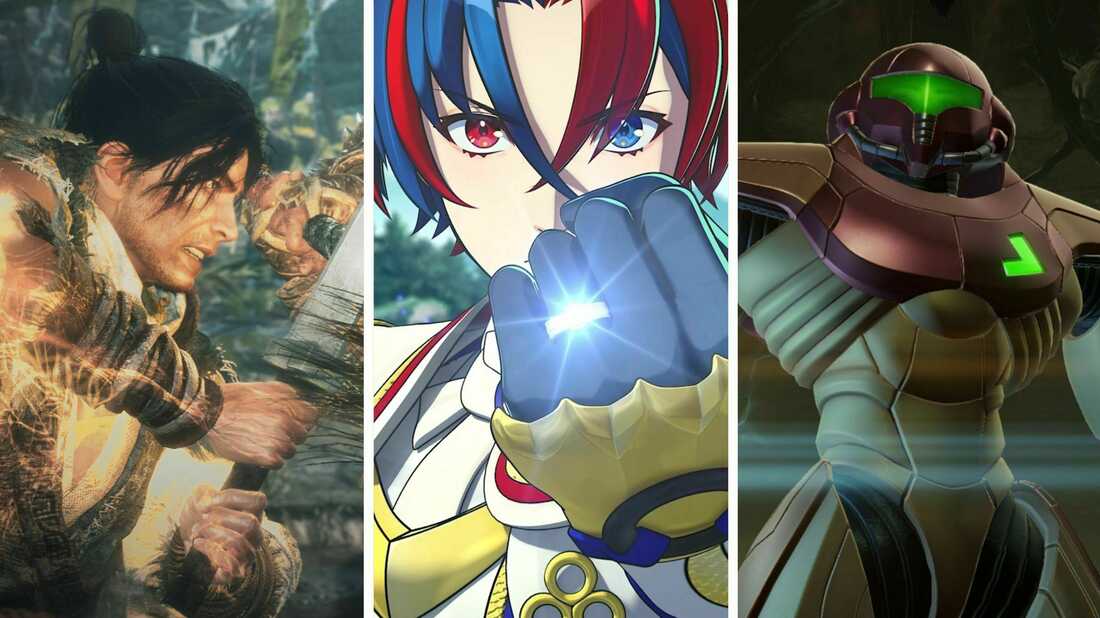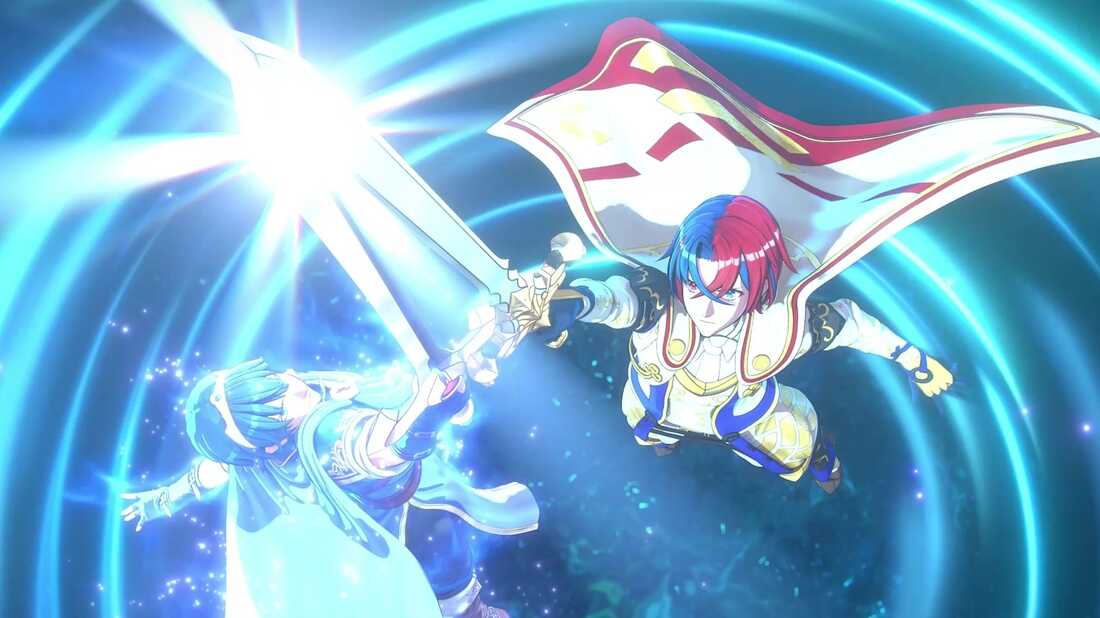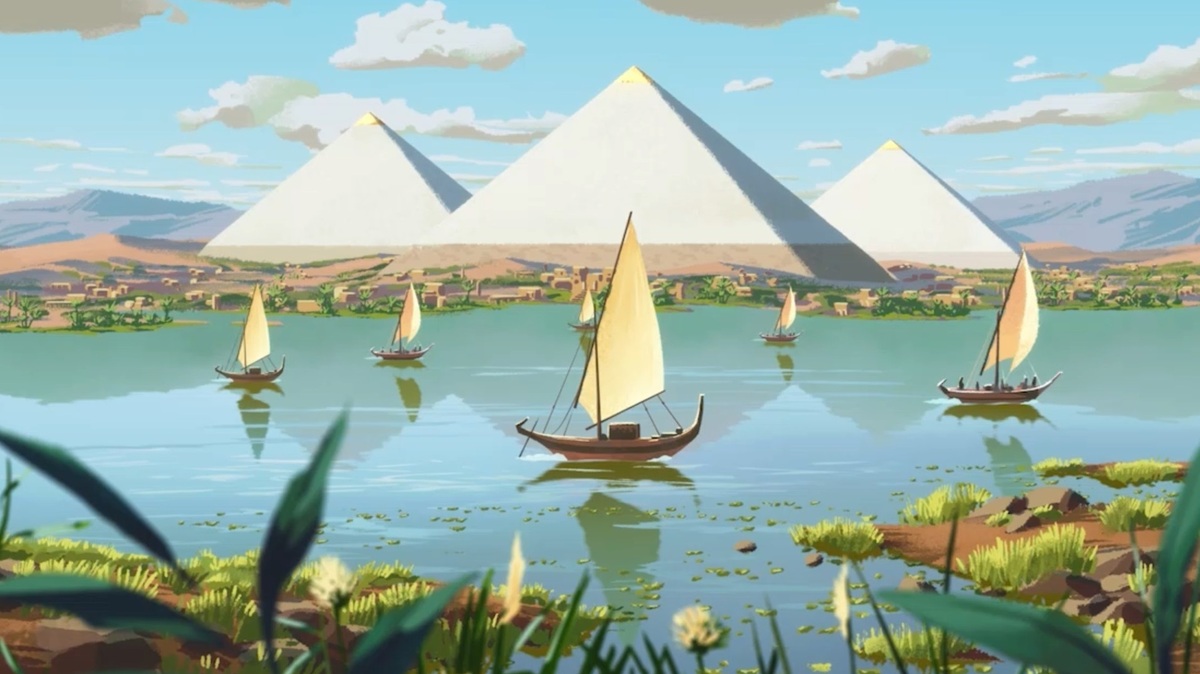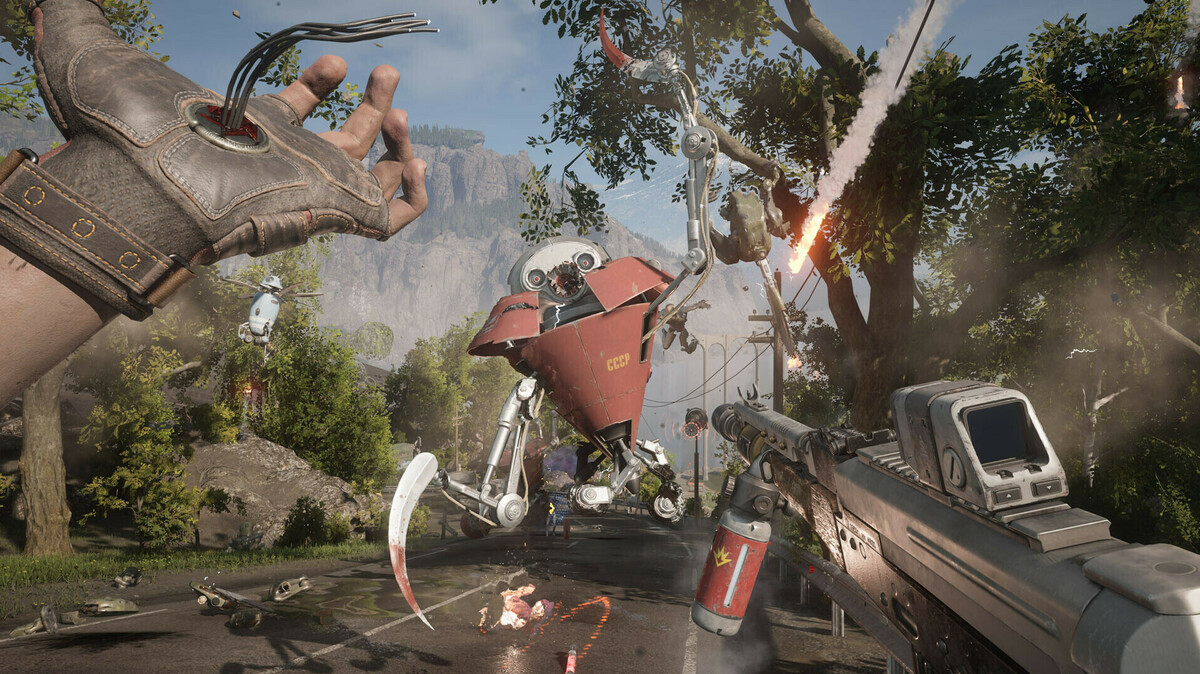
NPR staff review the year’s best games, and some you may have missed : NPR

Wo Long: Fallen Dynasty, Fire Emblem Engage, and Metroid Prime Remastered.
Koei Tecmo/Nintendo
hide caption
toggle caption
Koei Tecmo/Nintendo

Wo Long: Fallen Dynasty, Fire Emblem Engage, and Metroid Prime Remastered.
Koei Tecmo/Nintendo
After a brief post-holiday pause, video games came roaring back in 2023.
NPR has reviewed some of the biggest releases — Forspoken, Dead Space, Hogwarts Legacy, Like a Dragon: Ishin! and Wild Hearts — along with smaller titles, like Theatrythm Final Bar Line and Season: A Letter for the Future.
But the games kept coming — here are some of the most notable that we’ve been playing:

A Space for the Unbound released January 19th on Switch and PC.
Toge Productions
hide caption
toggle caption
Toge Productions

A Space for the Unbound released January 19th on Switch and PC.
Toge Productions
A Space for the Unbound
Toge Productions and Indonesia-based developer Mojiken are experts at getting maximal emotional range out of pixels on a screen (see: When the Past Was Around), so I was immediately interested in A Space for the Unbound when it was announced. Not surprisingly, the artwork, soundtrack and story make for an awesome, immersive experience that I’m already planning to play through again. Described by its creators as a “slice-of-life adventure game,” A Space for the Unbound follows couple Atma and Raya as they finish their last days of high school in 1990’s Indonesia.
The nods to Indonesian culture are often subtle but effective. They range from hearing traditional music, eating in an outdoor noodle shop, visiting an Internet cafe and shopping in the local general store. Life seems pretty good for our main characters – cinema dates, chocolate cake, festivals to plan – but something is very obviously “not right.”
You experience the story as Atma, rotating between visual novel scenes, fetch quests, quick-time-event fights and increasingly complex puzzles. It moves along at a steady pace, but gives space for the player to breathe when things get heavy. There’s always a stray cat to pet if you need a moment to recover!
-Rakiesha Chase-Jackson, Member Partnership Project Manager

Fire Emblem Engage released on Switch January 20th.
Nintendo
hide caption
toggle caption
Nintendo

Fire Emblem Engage released on Switch January 20th.
Nintendo
Fire Emblem Engage
Two words describe the Fire Emblem Engage experience best: fan service. From the opening minutes, you’re surrounded by characters eager to serve you — some of them even literally worship you as a god. The game throws dozens of these sycophants at you, each more often costumed like pop stars than soldiers.
But Engage actually sells itself as much on its ghostly Emblems as it does on its kaleidoscopic main cast. These magical figures come from three decades of franchise history — starting with OG protagonist Marth, all the way up to Three Houses‘ Byleth. Your warriors can summon them to change into glittering futuristic outfits, equipped with brightly-colored hair and new devastating abilities.
The stunning production values very nearly overcome a weak story. My “Divine Dragon” might be a milquetoast amnesiac, but damn if he doesn’t look good when he unleashes a barrage on the enemy. I even came to enjoy the game’s B-movie dialogue, but the drama really comes out in its gloriously-animated combat.
Fire Emblem has always come to life in its battles, where simple statistics transform into emotional epics. You come to care for these stock characters — you cheer when they land a critical hit; you feel betrayed when they miss. The formula might be tried-and-true, but Engage makes it the most glamorous it’s ever been.
Engage never surprised me the way the preceding Three Houses did. With few exceptions, its characters never revealed the depths I had come to expect from the series. But I still looked forward to every support conversation and every jaw-dropping cinematic, right up until the end. It may be dressed up in anime fluff, but the core mechanics are solid enough to keep you coming back.
– James Mastromarino, NPR gaming editor and Here & Now producer

Hi-Fi Rush was a surprise release from Bethesda and Tango Gameworks, which dropped on PC and Xbox on January 25th.
Bethesda Softworks
hide caption
toggle caption
Bethesda Softworks

Hi-Fi Rush was a surprise release from Bethesda and Tango Gameworks, which dropped on PC and Xbox on January 25th.
Bethesda Softworks
Hi-Fi Rush
Hi-Fi Rush is like an exciting theme park. It immediately drops you into a vibrant comic-book world that bounces along to the game’s soundtrack. Even when you’re not “on the ride” of its incredible rhythm-based combat, you’re meeting fun, campy characters who make for great villains and allies.
I really miss the heyday of music games and clickety-clackity plastic instruments. Maybe that’s why Hi-Fi Rush immediately felt like the game I’ve been waiting for, even though I had no idea an action-adventure like it could exist, let alone be great.
Like other rhythm games, what starts as frantic button-mashing turns into rewarding jam sessions. As you learn to time your strikes to the beat, you’ll face an escalating range of robot foes that fight back (also on tempo, of course). It’s a dance paired with an amazing soundtrack, and — funky as it sounds — I promise, it works!
-Alexander Diaz, Technical Program Manager

A terrified Thomasina in The Excavation of Hob’s Barrow, released on Switch January 25th after it came to PC last year.
Wadjet Eye Games
hide caption
toggle caption
Wadjet Eye Games

A terrified Thomasina in The Excavation of Hob’s Barrow, released on Switch January 25th after it came to PC last year.
Wadjet Eye Games
The Excavation of Hob’s Barrow
Barrow digger Thomasina Bateman finds herself invited to the humble Victorian town of Bewlay with the promise of a lucrative excavation. But her trip doesn’t go as planned and she’s forced to search the mysterious village for the man who first invited her to find Hob’s Barrow. As she attempts to gain the support of the standoffish townsfolk she slowly uncovers clues linked to her father’s past.
I thoroughly enjoyed this game, described as a “folk horror narrative-driven adventure” and reminiscent of a spooky, psychological thriller movie. Even with the retro graphics, the game manages to convey striking and ominous imagery.
Hob’s Barrow launched on Nintendo Switch in late January, after a PC release last year. I loved the convenience of playing this game in handheld mode, but sometimes found the cursor difficult to control with the left stick. Thankfully, I could use the directional buttons and the R button to navigate instead.
Beyond interacting with the locals, there were plenty of immersive puzzles which far outweigh the game’s minor annoyances. I took my time exploring and completing The Excavation of Hob’s Barrow over about 8 hours. I would strongly recommend it to anyone who loves mysteries or story-focused games.
-Alba Karuni, Senior Research Analyst

Nintendo surprised fans with Metroid Prime Remastered, which released the same day it was announced.
Nintendo
hide caption
toggle caption
Nintendo

Nintendo surprised fans with Metroid Prime Remastered, which released the same day it was announced.
Nintendo
Metroid Prime Remastered
Metroid Prime Remastered is one of the best looking games on the Nintendo Switch. The original Metroid Prime took advantage of small details, like when your visor fogged up with steam from a vent or when you briefly saw a reflection of your face after a flash of light, to make a uniquely immersive experience.
Metroid Prime Remastered takes that immersion and jacks it up to 11, thanks to its breathtaking new visuals. While it’s generally expected for a remaster to update the graphics, Metroid Prime Remastered goes above and beyond, populating every single section of the game with intricate details that make the world of Tallon IV feel mysterious, alien, and real.
The game also comes with a slew of quality of life changes and new options that bring the game’s controls in line with other modern first person shooters. While the game’s design may feel dated, (with frequent backtracking, no fast travel, and saving restricted to specific save rooms,) Metroid Prime Remastered is still an amazing shooter, and a fantastic puzzle-platformer.
-Ivy Winfrey, All Things Considered Intern

Octopath Traveller II came out on Switch, PC, and PlayStation February 9th.
Square Enix
hide caption
toggle caption
Square Enix

Octopath Traveller II came out on Switch, PC, and PlayStation February 9th.
Square Enix
Octopath Traveler II
Octopath Traveler II follows Square Enix’s 2018 original that drew acclaim for its pixel art, lush soundtrack, and deep combat system. The sequel is in much the same mode: a traditional turn-based JRPG where you choose between eight different characters, each with unique stories and abilities.
In the five years between these games, Square Enix delivered inventive new twists, like a Day/Night system that gives travelers two “Path Skills”: abilities that allow you to garner information from townsfolk or convince them to fight for you. They also spruced combat up with “Latent Powers,” unique enhancements for characters and their professions that can turn the tide in battle.
Octopath II also features storylines that intersect between your travelers, which lets you move the story further in a more efficient way. The game’s got a fast-forward button, which I used during some of the game’s uninspired scenes. But while the dialogue leaves much to be desired, the soundtrack steps up to convey the emotions the words fail to.
Lackluster writing notwithstanding, Octopath embraces the best parts of old-school JPRGs. The art direction stands out, evolving 2D graphics to push the limits of the genre. I was often surprised how large each zone could be, with bridges and boat-rides that open up more terrain to explore. Of course, with all that wandering you’ll have to fight many, many enemies (though some characters have traits that can avoid combat).
The frequent battles also contributed to a sluggish early game that has you trek from town to town to find all eight companions. These new party members will likely be under-leveled and under-equipped, and it takes some grinding to unlock good skills for them. Once you commit to four or five characters, however, you’ll find Octopath Traveler II to be an engaging and rewarding adventure for JPRG fans.
-Bryant Denton, Grove Support Associate for Member Partnership

Pharaoh: A New Era, a remake of a beloved 1999 city-building game, came out February 15th of this year.
Triskell Interactive
hide caption
toggle caption
Triskell Interactive

Pharaoh: A New Era, a remake of a beloved 1999 city-building game, came out February 15th of this year.
Triskell Interactive
Pharaoh: A New Era
Resurrecting beloved video games is always a bit of a gamble. Ask Capcom why their remake of Resident Evil 3 hasn’t sold as well as their Resident Evil 2 remake, or Crytek why their remaster of Crysis fell so short with fans of the original game.
The reality is that re-releasing successful games is like trying to catch lightning in a bottle twice, and the old magic doesn’t always find its way to the new game. Unfortunately, that’s what happened to Pharaoh: A New Era — Triskell Interactive’s remake of the 1999 city-building classic.
Just like the original, you rule over ancient Egypt, tasked with building settlements and protecting your citizens from dangers like disease, fire, and war. Your success depends on appeasing fickle gods, and mastering mechanics from trade to resource production, to population welfare.
Not everything works as expected, however: Sometimes invading armies don’t appear, even after several warnings, and shouldn’t I be able to get rid of man-eating crocodiles? I also found the updated graphics to be somewhat inconsistent, which at times looked more like a modern mobile game than a loving tribute to the pixel art of the original.
All in all, Pharaoh: A New Era is still a rewarding city-builder complex enough to have you running to your mummy, even if it fails to honor the original.
-Alex Curley, Associate Producer, Programming

Fight Soviet robots in Atomic Heart, which released February 21st on PC, Xbox, and PlayStation.
Mundfish
hide caption
toggle caption
Mundfish

Fight Soviet robots in Atomic Heart, which released February 21st on PC, Xbox, and PlayStation.
Mundfish
Atomic Heart
Atomic Heart impresses with arresting art design, satisfying combat, and a compelling alternate history setting where the Soviet Union became the dominant global power after it decisively ended World War II. It’s also nothing like what the pre-release hype for the game suggested it might be. Rather than an immersive Bioshock-style narrative shooter, it’s more of a straight-forward action game.
Which is totally fine, I like action games. The problem lies in its mediocre story and downright bad writing. I already grew weary of its big mouthed protagonist just a few hours into Atomic Heart. Agent P-3 is supposed to be some kind of grizzled, won’t-take-no-for-an-answer action hero. Instead, he delivers lines like: “I’m sick to death of bots. Always up in my grill!” A generous reader would call this dialogue “campy,” but it completely upends the game’s tone and breaks its immersion. For a game that wants you to pay attention to its world, that’s a big knock against it.
I often feel inundated with the sheer number of games I need to catch up with, which makes it hard to recommend something that feels so firmly mediocre. That hasn’t stopped others from liking it very much. At time of publication, the game has a “Very Positive” review score on Steam, with over 10,000 reviews. It’s also on Xbox Game Pass, so it may be worth checking out if you’re subscribed to that service and willing to look past Atomic Heart‘s most obnoxious flaws.
-Vincent Acovino, All Things Considered Assistant Producer

Fast-paced and brutally difficult Wo Long: Fallen Dynasty premiered on PlayStation, Xbox, and PC March 3rd.
Koei Tecmo
hide caption
toggle caption
Koei Tecmo

Fast-paced and brutally difficult Wo Long: Fallen Dynasty premiered on PlayStation, Xbox, and PC March 3rd.
Koei Tecmo
Wo Long: Fallen Dynasty
Wo Long: Fallen Dynasty, the latest action-RPG from Team Ninja, offers a maximalist take on the Soulslike genre, with arcadey speed and intensity. The game feels and plays like a successor to the studio’s Nioh and Nioh 2 (but now you can jump!). It’s also clearly inspired by From Software’s Sekiro: Shadows Die Twice, though Wo Long takes place near the end of the Han dynasty in China, while Nioh and Sekiro were both set in Japan.
Your character is also a completely blank slate. While Wo Long has a highly customizable character creator, you won’t have much of a personality. Instead, depth comes from combat that combines martial-arts melee and elemental magic. NPC allies (and/or real life co-op companions) will accompany you as you fight against soldiers, spirits, mutants and monsters. The story that unfolds is as convoluted and overpopulated as a Dostoyevsky novel, and Team Ninja seems aware enough of that fact to have offered a detailed in-game glossary of the people you’ve encountered. The game’s dialogue and cutscenes resemble more Anime than Dostoyevsky though, often leaning into the genre’s most problematic tropes of cartoonish female gasping and goofy male bravado.
Wo Long isn’t nearly as punishing as Sekiro, but it’s not a cakewalk either. The first boss fight is one of the toughest in the game, and its lesson is clear — you have to master precise deflection timings to survive. But beyond that essential skill, Wo Long takes a kitchen-sink approach to mechanics. You level up points tied to five different elements, which all have numerous unlockable spells. Weapons abound, each with their own elemental affinities and unswappable special attacks. You have “Spirit,” a “Divine Beast Gauge,” and a “Morale” system. NPC allies each apply their own special buffs to your party. While players will undoubtedly find ways to exploit specialized builds, it’s all a bit overwhelming.
Wo Long: Fallen Dynasty suffers from a lack of focus, but it’s plenty enjoyable if you can meet the game on its own terms. It’s also got forgiving co-op that can make its fights far more approachable. If you like this kind of fluid and occasionally punishing action game, Wo Long may be just the thing to tide you over until the Elden Ring DLC drops.
-Justin Lucas, Director, Communications
